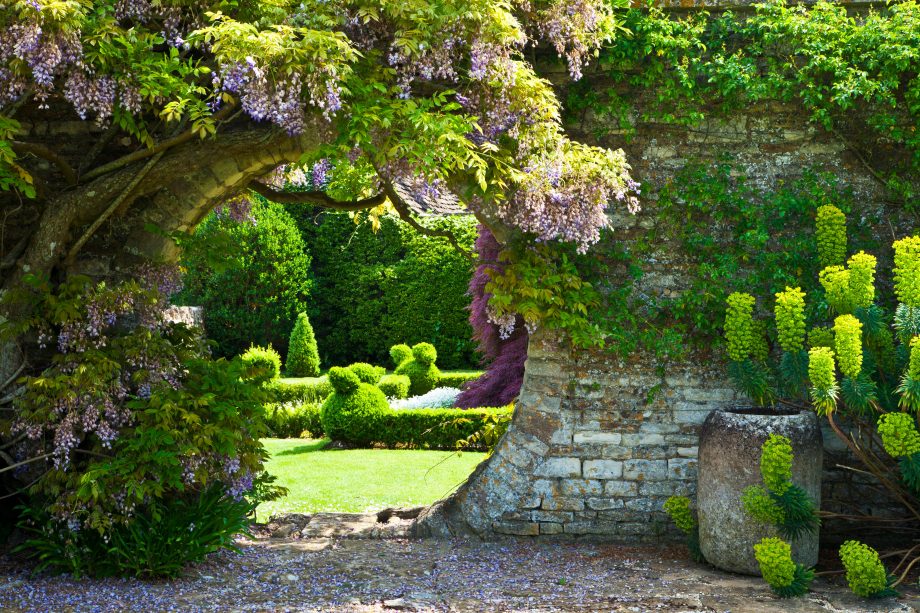Mark Diacono tells us his top salads to plant to accompany barbecues this summer season.
As the Isley Brothers almost said, summer leaves make me feel fine. As much as I love barbecued delights, sunny weather makes me crave clean, fresh leaves to go with them or redress the balance – some as plain and crisp as frost, others lively and bold as brass.
Dedicating a small space to growing your own salads and other embellishments will keep you in money-can’t-buy flavours and combinations and takes little effort or outlay.
‘Allow any to go to seed once you’ve harvested enough and you’ll find them popping up randomly in years to come’
Often, a lettuce – as simple as it comes – is all I want from a summer salad. A lazy-leafed butterhead, such as Butter-crunch, or a wonderful, 200-year-old, full-flavoured, elegantly ragged crisphead lettuce such as Reine de Grace is hard to beat, dressed only in good olive oil and salt.
That said, we’ve become a nation of salad-bag lovers and I use these along with Green Oakleaf and Erbette – somewhere between a soft spinach and lettuce – as the base for mixed salads and grow a steady supply of punctuating flavours, textures and looks to go with the plainer ones.
Mexican tree spinach, callaloo, rocket, giant red mustard and buckler-leaved sorrel are a few of my favourites that almost grow themselves. Allow any to go to seed once you’ve harvested enough and you’ll find them popping up randomly in years to come – somewhat annoyingly, they’re usually stronger and earlier than ones you’ve sown.

I leave some to mature where they emerge, but if they’re too numerous or in an inconvenient location, I pluck the rest as I need them when they’re a few inches tall, tender and full of flavour for a delicious (and free) mixed salad.
Herbs are wildly undervalued as salad leaves. Used sparingly, coriander, shredded mint and basil (especially the smallest leaves and torn-up flowers) are so good, but my favourite for summer salads might well be salad burnet.
‘If you’ve yet to eat a nasturtium flower, pop outside and put that to rights immediately’
Its small, oval, saw-edged leaves carry a beautifully clean, fresh cucumber flavour that brightens a bowl of mixed leaves.
Best bought as a young plant, salad burnet wakes from winter with a cheering optimism that carries you through the last dark weeks into spring. By summer, it’s good to cut the leaves back hard, to encourage fresh succu-lent growth: the larger, tougher leaves add a delightful cucumber flavour to jugs of water.
Salad burnet self-seeds if allowed and, once you’ve tried it, you’ll be happy to let it: I tend to leave one or two plants to flower – the red flowers are tiny, but really special – and go to seed for next year’s benefit.
Edible flowers are just the thing when it comes to adding a flourish to summer leaves.
Of the many possibilities, from courgette flowers and viola heartsease to feijoa, I’m particularly fond of borage and nasturtiums. Borage’s early flowers are a precious early source of pollen, which, along with its young leaves, add succulent, cool cucumber to summer salads.
If you’ve yet to eat a nasturtium flower, pop outside and put that to rights immediately. Pick a whole flower and give it a gentle shake (eating a bee is rarely pleasurable for either party) and pop it in your mouth whole. The unravelling of flavours goes from fresh and pea-like to start, through sweet and honeyed as you reach the nectar, followed by a bold peppery finish.
They are delicious, but, bear in mind, the deeper the colour, the stronger the pepperiness tends to be, so go for a yellow flower if you’re a bit uncertain. A couple for each person is plenty.

Alan Titchmarsh: How each of our English country gardens can play their part in saving the planet
Our columnist Alan Titchmarsh talks extreme weather, climate change and the faith all gardeners have in the extraordinary ability of

The worst garden pests of all? The ones you invite in with open arms
A couple of weeks ago, Alan Titchmarsh wrote a lovely piece for Country Life about how to get children and

Six gardening jobs to do right now which will pay off in the summer
Steven Desmond describes six rejuvenating tasks that will make a huge difference once the weather picks up.

A peek behind the scenes at France’s annual rose extravanganza at the Parc de Bagatelle
Charles Quest-Ritson, quite literally the man who wrote the book on roses, reveals what goes on at France's annual Concours





